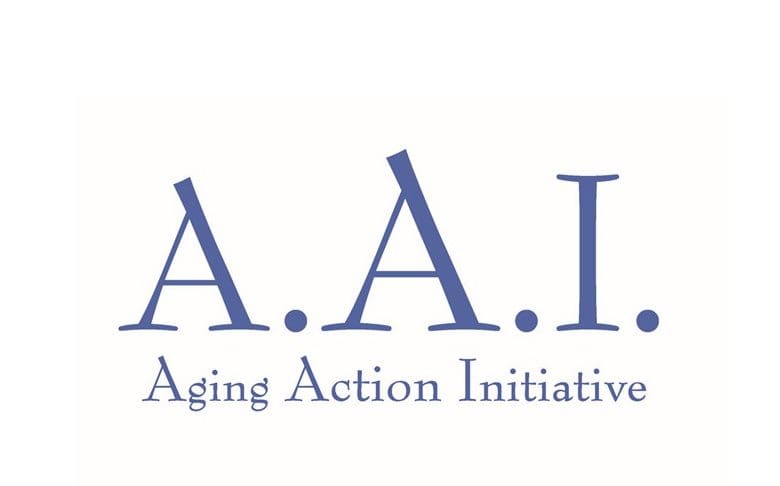April 3, 2017 | AAI interviewed member Robert Betts, Director of Planning Operations, Marin Transit. He talks about transit options for seniors in Marin, the importance of collaboration in his work, and how to achieve an age-friendly Marin.
 What do you do for Marin Transit?
What do you do for Marin Transit?
I’m Director of Planning for Operations for Marin Transit, the public transit agency for local transit services. It means I deal with fixed bus routes, supplemental transit routes, the Stagecoach in West Marin, and Marin Access. Marin Access provides a suite of transit services for seniors and those with disabilities who need extra help with their mobility needs.
How did you get into this kind of work?
I was first interested in engineering, which I studied at the University of Iowa. I went on to get a graduate degree in engineering and planning from Cal Poly. I worked a few years as a transit consultant on projects throughout the Bay Area, including the Community Based Transportation Plans for the Marin City and the Canal Neighborhood. Six years ago, I landed a job at Marin Transit as Planning Manager. In this position, I supervised one of the best in the field, Paul Branson, who was Marin Transit’s Mobility Manager, and who brought the innovative approaches and programs that we enjoy today in Marin.
In what ways does your organization help our older adults?
Marin Transit offers a number of transportation options: fixed route, paratransit, and some specialized options.
Fixed Route is the traditional bus routes on a regular schedule. The Fixed Routes are open to everyone. Seniors (defined as someone over 60) receive a 50% discount on the standard fare, and they have priority seating at the front of the bus. All of Marin Transit vehicles are wheelchair accessible, and have low-floor sidewalk-level boarding for easy access.
Paratransit service is for seniors who live ¾ mile from a bus stop and aren’t able to walk to the bus stop. This a door-to-door service that requires a reservation ahead of time. It costs only $2.
Marin Access is a program that offers information and additional transportation options for seniors. Seniors who want same-day service can sign up for our taxi Catch-a-Ride program. Typically, a senior can make a reservation with just two hours advance notice. Participants can get up to eight one-way rides a month, with Marin Transit paying the first $14 of the fare. In many parts of the county, seniors can participate in a Volunteer Driver Program, either as a rider or as a driver. In these programs, Marin Transit reimburses drives to help cover the cost of gas.
Travel Navigators (415-454-0902) are a one-stop resource for program information and eligibility for all the Marin Access programs. It’s easy for Seniors to sign up for our programs. They simply contact one of our Travel Navigators (who speak English, Spanish and Vietnamese). People often ask, “How do I know what’s the best transit option for me?” The Travel Navigator resource center helps people figure that out and sign up.
In conversations with Marin seniors I hear, “I want to be active. I want to go to lunch with friends, and to go see family. I’d like the option to get around without having to drive.” Many look at seniors as people with walkers. This is not the case. People are healthier and more active today. I enjoy this work because I’m helping people get around by taking away their mobility challenges.
What are some innovations we can look forward to regarding mobility for older Marin residents?
The good news is that there are changes coming to make it easier for older residents to stay active and connected in their communities.
Marin Transit just completed Marin Access: Strategic Analysis and Recommendations (August 2016). We are following up with online tools for residents and out-of-county family members to  more easily learn about Marin Transit services. Later this year, we’re adding online software so people can schedule paratransit and Marin Access programs without needing to make a phone call to reserve a ride. We are implementing a one-call/one-click service for quicker information.
more easily learn about Marin Transit services. Later this year, we’re adding online software so people can schedule paratransit and Marin Access programs without needing to make a phone call to reserve a ride. We are implementing a one-call/one-click service for quicker information.
Starting this spring, we are “tabling” at senior centers throughout Marin. Tabling is something like satellite office hours. The idea is to use existing senior events within the community to have conversations about transportation options. With “table time”, seniors can speak with a Marin Transit representative and get answers to transportation-related questions. We started this in response to taking a more proactive approach to communicating with seniors and having dialogue before the need arises so people are aware of their options.
I am also working to bring same-day service for paratransit riders. We just received a grant from the Federal Transit Administration to kick-off a three-year program to provide same-day service. I am in conversation with LYFT and other “shared ride” services about a potential chariot-for-service program. We are excited about the potential of adding this option for seniors.
Tell us about Marin Transit’s involvement with Aging Action Initiative:
Paul Branson was the first person at Marin Transit to be part of the Aging Action Initiative. He had already developed a strong relationship with County Health and Human Services, and with West Marin Senior Services. He believed in the initial concept of the initiative – there is ‘no wrong door’ to get needed services.
Jon Gaffney, who is now with Golden Gate Transit, was working for me last year when he was a speaker last year at AAI’s Inform & Connect Workshops, explaining Marin Transit resources for seniors.
This year, I was invited to join the Steering Committee for the Aging Action Initiative. I’m looking forward to my first meeting in April.
How has collaboration helped you do your work? Specifically, your relationships and partnerships in the AAI network?
We rely on collaborations to be successful.
We collaborate with groups such as Whistlestop, CARSS in the Sausalito Village, senior centers  throughout Marin, and Marin Villages. For example, we share our expertise to help with training volunteer drivers, and we have a resource center with training materials and programs, and software to manage the Volunteer Drive Programs.
throughout Marin, and Marin Villages. For example, we share our expertise to help with training volunteer drivers, and we have a resource center with training materials and programs, and software to manage the Volunteer Drive Programs.
Marin Transit also has a long-standing and great partnership with West Marin Senior Services. We support their work, and they help us by sharing information about our transit services in West Marin. They are our eyes and ears in West Marin, letting us know about the needs of residents. Because of our partnership, we started a pilot shuttle service from Pt. Reyes to Novato.
We work with our all of our partners to make sure transportation for the rider is the best it can be.
What is your vision of an age-friendly Marin?
Many seniors are reaching a point in their lives when they may not feel comfortable driving and that could either lead to either unsafe driving behavior or turn into isolation if they choose to hang up the keys. I would say my vision for an age friendly Marin is one where residents can live independently throughout their life and not have to rely on driving themselves for mobility.
Marin Transit Marin County Transit District (Marin Transit) was formed by a vote of the people of Marin County in 1964 and was given the responsibility for providing local transit service within Marin County. Marin Transit contracts with other providers, including Golden Gate Transit, Marin Airporter, MV Transportation and Whistlestop Transportation, for local bus and paratransit services. Marin Transit pays for services using Measure A Funds, State Transportation Development Act Funds, fares, property taxes and Federal Section 5311 rural transit funds. For more information visit marintransit.org.
Aging Action Initiative (AAI) is a collective effort of over 65 different agencies, grassroots organizations, commission and neighborhood groups, funded by the County of Marin and coordinated by MARINSPACE, collaborating for an age-friendly environment. For more information visit agingactioninitiative.org or connect with us on Facebook.



